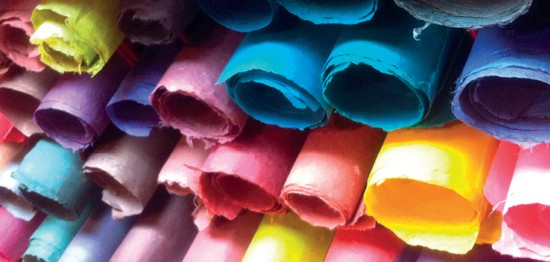
Papers and Materials
When selecting papers for the projects in this book, consider how you intend to use the piece, and where and when you will use it.
If you are folding for family fun, paper selection might not be important, but if you are making pieces to wear for formal events, special gifts, or for sale, start with purchasing good quality, hand-made washi-style mulberry or abaca papers. They come in many weights, but stocking three different thicknesses—tissue thin, medium, and heavyweight— will generally cover your origami jewelry needs. Watercolor papers of 100 percent cotton rag are also useful, particularly if you choose the lightest weights. Be prepared to “buy and try” several types from convenient sources, and so don’t buy much of any stock until you have had a chance to fold, test, and become familiar with a small sample.
Why limit yourself to folding just paper? Other foldable materials now exist that are more durable than the average paper off the shelf. Consider using vinyl wallpaper, plasticized or metallized films, foils, back-coated fabrics, or specialty composites. Laminates of these with fine handmade papers may be more decorative and durable than the paper alone, and yet still hold a crease well enough to allow using the origami techniques presented here. There are also thousands of dollar bill money folds, and many of these wonderfully tough paper currency compositions could easily become wearable art or jewelry.

Colorful handmade papers, such as these rolls from the Origamido Studio, are made with high quality fibers and pigments.

Fancy store-bought prints and patterns can be back-coated to make them suitable for folded “jewels.”